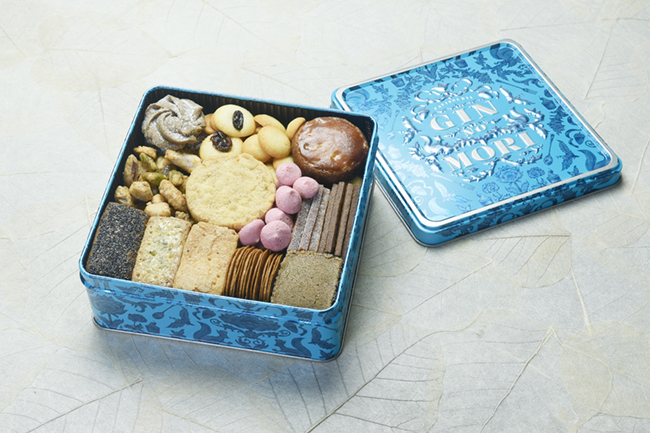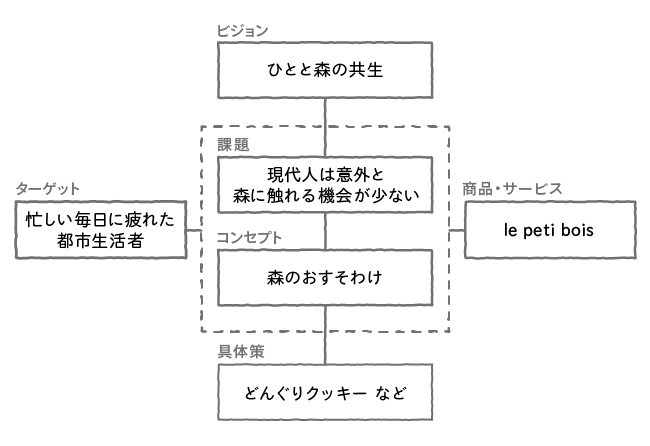As mentioned last time, in our product development project with frozen osechi maker "Gin no Mori," the first step was to clearly define the "vision" guiding the company's path forward. Having long taken the blessings of the mountains and forests for granted in Ena, "Gin no Mori" resolved to conduct its business activities with the ideal of "a society where people and forests coexist."
"Now then, Mr. Yamada. If we at Gin no Mori develop products on our own, our ideas will only come from our own lives and our own wallets. That's essentially thinking about controlling just our immediate neighborhood, right? But you know, that won't work in the times ahead, will it? Wouldn't it be amazing if we could connect all the 'points' across Japan and the world into a 'network'? Try making sweets like that."
Looking back now, Chairman Watanabe's somewhat enigmatic words encapsulated everything. The driving force to gather those "points" scattered nationwide was the ideal that "people and forests can coexist." What was required was creating products that communicated this and resonated with others.
"Let's offer 'a share of the forest' to urban dwellers tired of their busy lives."
That vague concept had been floating around since the project's start. But without unique concrete plans, it would just be a pipe dream.
The first key point was the worldview. We looked at various products that seemed close to "a share of the forest," but they were all consistently fancy, cute, and fairy-tale-like. But is that truly the kind of storybook world tired adults seek in the forest?
This is where the power of an art director becomes invaluable. This time, we consulted with our company's Emi Kubota and explored designs that were more mature, sophisticated, mysterious, and stylish—the kind of gift fashionable people would want to give.
Another key point was finding "facts" that would make the "forest" feel real. Whether it was recipes or ingredients, we made an effort to obtain them.
This is a bit of a tangent, but back in my late twenties, when I was drinking the most in my life, I often hung out around Shinjuku's Okubo area. Back then, a kamjatang (a stew made with pork spine and potatoes) that could feed four or five people cost under 3,000 yen. So, even when we all got together and drank, it was only about 2,000 yen per person. Later, as the Korean Wave boom hit, prices in the area skyrocketed. I haven't been back in ages, but it was there I encountered an ingredient called "acorn konjac" (Korean name: Totorimuk). Remembering this recently, I looked it up and discovered acorns are a major traditional health food in Korea.
"What if we baked cookies using acorn flour from Japanese forests?"
I shared this whimsical idea with Mr. Otani, the patissier at Gin no Mori, and we went through trial and error.
The result is the cookie tin "le petit bois (little forest)" from Patisserie "GIN NO MORI". It's a slightly luxurious "forest treat" featuring acorns, of course, along with sansho pepper, bamboo shoots, and plenty of nuts and dried fruits (actually, the technique used to pack the tin so tightly without gaps draws on the art of arranging osechi dishes in layered boxes). What do you think? We take pride in having created a unique product that stands apart from conventional "forest sweets."
If someone had told us, "Just make something interesting and sellable, anything goes," we would have been truly stumped.
A clear, unique vision created a solid concept, and every proposal was evaluated and selected based on that direction.
There was no room for vague notions like "It's kinda nice." The copywriter, art director, interior designer, pastry chef, and Gin no Mori management all shared the same vision. That's precisely why we could invest the time and cost to use domestically produced acorn flour.
Of course, a single product can't solve everything. How richly can we design the "forest's bounty" experience from here on? That challenge has only just begun—more on that next time.
Please, enjoy!









